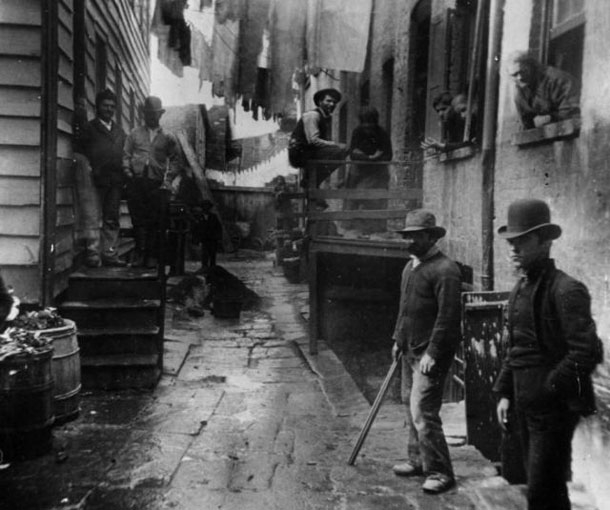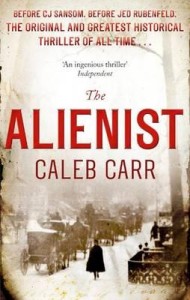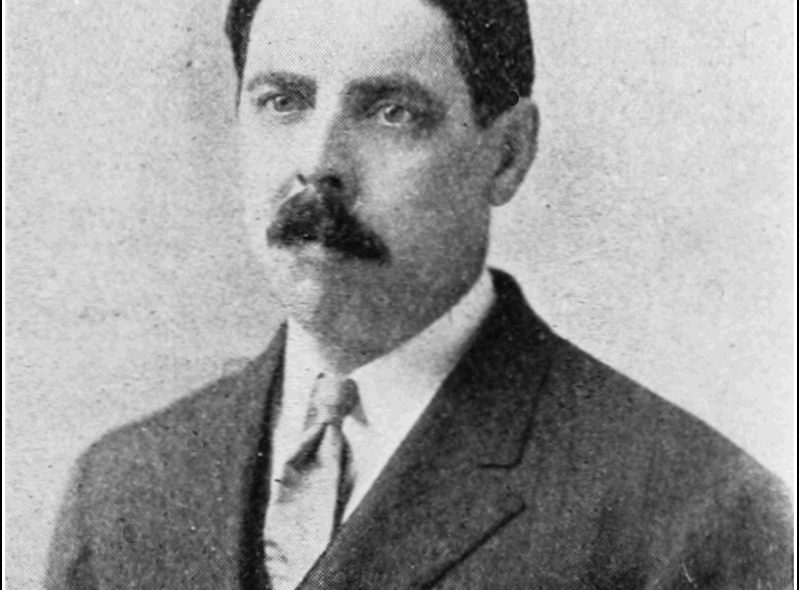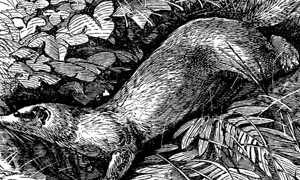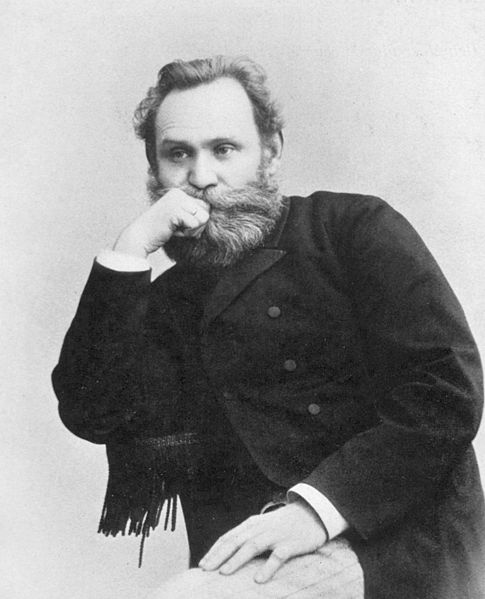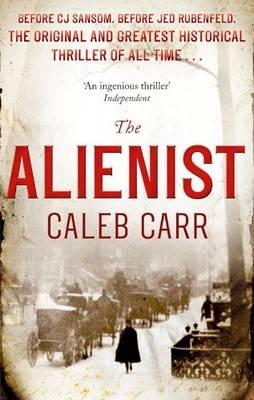As the 20th anniversary year of The Alienist‘s publication draws to a close, I have decided to honor the occasion one final time with a special three part book blog series. Regular visitors to 17th Street will already be aware that I have spent much of 2014 discussing the various works of fiction and non-fiction Caleb Carr cited as inspirations for The Alienist on the 17th Street book blog (see my discussions of The Thin Man by Dashiell Hammett and How The Other Half Lives by Jacob Riis as examples). However, despite having run 17th Street for nearly nine years now, it recently occurred to me that I have never shared any of my personal views about the book that started it all: The Alienist.
In truth, my failure to share my personal views about either of the Alienist books on 17th Street was largely by design. As I see reading as a deeply personal experience, my original goal with 17th Street was simply to provide a comprehensive resource for interested readers that would serve to enhance the reading experience with maps of book locations, timelines of key plot events, character lists, character analyses, and historical information rather than influencing the reading experience with subjective opinion pieces. However, having now spent the past year sharing my personal views on the various works that influenced The Alienist, I think the time has come for me to finally share my subjective—sometimes controversial—opinions about the book itself.
The following series therefore pays homage to a book that touched me more powerfully than any other had done at the time I read it over ten years ago, and that continues to inspire me to this day. Whether you are a first-time reader of The Alienist or are returning for a re-read, I hope you find the following series helpful, and will take the time to look a little more deeply in order to see the book as more than just a gripping psychological thriller or enticing piece of historical fiction; rather, that you will see it as the superbly constructed piece of social commentary that it is—a piece of social commentary that is not just about society of 120 years ago, but about our society, too.
N.b. The following post contains major spoilers for The Alienist. To read a spoiler-free synopsis, please refer to the summary page.
“You can practically hear the clip-clop of horses’ hooves echoing down old Broadway…”
The New York Times opened their 1994 review of The Alienist with the preceding statement, and there is no better way to introduce what is, at the most basic level, a historical thriller of the first order. As I noted in one of my posts replying to the NY Public Library’s discussion of The Alienist in late 2013, Mr. Carr is a historian first and foremost, and it shows in the way he captured not only 1890s New York City and everything that entails, but also the history of psychology and psychiatry, forensic science, and even literature as well.
Speaking as an experimental psychologist with a keen interest in my own field’s history, I can attest that the accuracy and skill with which Mr. Carr incorporated the history of psychology and psychiatry into the text was nothing short of superb. Even though none of the characters had more knowledge than they would have had in 1896, a realistic psychological profile was able to be constructed (quite a feat!) by a psychiatrist, Dr. Laszlo Kreizler, who was in no way anachronistic, as Mr. Carr explained in his 2013 New York Times web chat in answer to a question I asked about the real psychological figures who contributed to Dr. Kreizler’s character and professional opinions:
Laszlo Kreizler was based in part on Dr. [Adolf] Meyer, very definitely, but he was equally based on William James, and the combination is important: Meyer, while he was forward-thinking in most respects, tended to be very medical in his outlook, and very concerned with subjects that medicine could directly address. James, on the other hand, though a doctor, had transcended medicine, and was willing to look toward any solution that might throw light on a particular problem, or that might throw light on life in general. I like to think that Kreizler, for all his seeming rigidity about certain things, was a philosopher as much as he was a medical man, and hence the combination. There were other influences on his character, of course, and he basically sheds light on them in the first big examination scene at 808 Broadway, where the note to Mrs. Santorelli is examined. No influence was too outlandish (as in the case of Krafft-Ebing) or too incompletely formed (as in the case of Freud) for him to consider, whereas both of those men were dismissed out of hand by most of the medical establishment. In short, Kreizler was as much a psychologist as a psychiatrist, and perhaps more his own breed of philosopher above all.
Beyond the history of psychology and psychiatry, the novel also provides an interesting glimpse into the history of forensic science. Thanks to the inclusion of the forward-thinking Detective Sergeants Marcus and Lucius Isaacson, the investigative team is able to employ forensic techniques that were only emerging at the turn of the last century, including dactyloscopy (fingerprint identification), anthropometry, and handwriting analysis. However, in case it seems a little too prescient of the Detective Sergeants to only use techniques that time would establish had sound scientific basis, we also see Marcus try his hand at optography, an intriguing technique that was ultimately doomed to failure. Involving the attempted retrieval of an optogram, an image on the retina of the eye, optography was based on the popular nineteenth century idea that the retina records the last image it sees at death.
| Continue reading →

